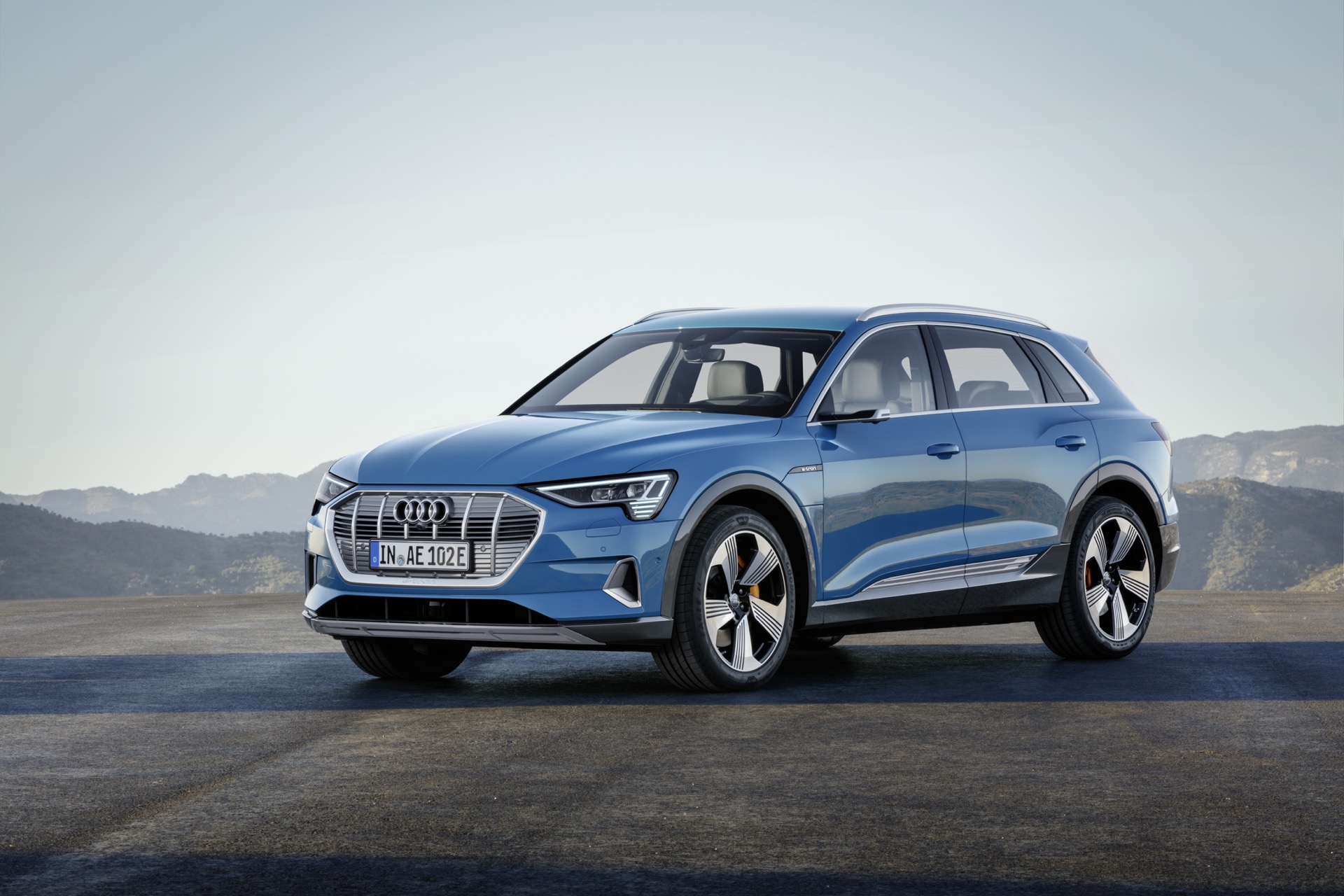
The 2019 e-tron is everything an electric vehicle should be. It’s quiet and quick, and shows off the strengths of having so much torque available pretty much instantaneously.
For its strong performance, above-average ride and handling, all-weather and light off-roading ability, and towing capability, the e-tron is just as versatile as some of the best gasoline SUVs you might compare it to. That’s earned it a rating of 8 out of 10 in this category. (Read more about how we rate cars.)
The e-tron has two motors that operate independently at their respective axles. The rear motor makes 224 horsepower and 262 pound-feet, while the front motor makes 184 hp and 228 lb-ft. Since the motors produce nearly all of their torque just past zero revs, and they rev very high compared to gasoline engines, there’s no need for a multi-gear transmission.
Peak power (not yet officially listed for the system) is provided via a Boost Mode that can sustain that for eight seconds at a time, enabled by engaging Sport mode and pushing the accelerator past the floor detent.
Audi quotes a 5.5-second 0-60 mph time for the e-tron, but its responsiveness and quiet, pin-you-back launches suggest even better—it’s so drama-free. You hear the faint whine of the motors only when you’re accelerating rapidly.
Brakes in the e-tron are unlike those in any other electric vehicle. Thanks to a complex, electromechanical arrangement, the e-tron uses the motor/generators when you lightly step on the brake pedal, and use the brake pads only when more you step harder on the pedal..
Stopping aside, the e-tron has three settings for regeneration—what happens when you ease/lift off the accelerator but don’t touch the brake. The first mode is essentially coast mode, while the most aggressive mode feels like driving a gasoline car in one lower gear than normal (about 0.18g of deceleration). Separately, an Automatic mode considers following distance, map data, and other factors. In any of these modes, the e-tron feels intended to mimic the experience in a gasoline vehicle, not provide the “one-pedal driving” experience (where you might be able to avoid touching the brake pedal) of a Tesla, a BMW i3, or a Nissan Leaf (with e-Pedal)—or a golf cart, for that matter.
Otherwise, the behavior of the e-tron in stop-and-go traffic feels meant to mimic that of gasoline vehicles, with some measure of idle creep (forward movement when you lift off the brake pedal) dialed in.
Governing how the e-tron reacts is Drive Select, which offers Auto, Comfort, Efficiency, Individual, Offroad, and Allroad modes. Depending on what’s dialed up, the air suspension can raise the e-tron by 3.0 inches for moderate off-roading or deep snow (we did some churning through sand in an early drive). For those who want to tweak the settings themselves, there are Comfortable, Balanced, and Dynamic drive modes that affect steering and ride.
The e-tron is easy to maneuver and place in parking lots and within narrower lanes; the low center of mass from the battery pack’s mounting under the floor helps the whole vehicle feel balanced and confident, even though it isn’t tuned to be particularly sharp, firm, or performance-focused.
The e-tron can also tow up to 4,000 pounds when equipped with the towing package.
Sometime next year, a higher-performance version of the e-tron will arrive, featuring two motors in back—for a total of three—plus a more aggressive traction and stability control system that should aid performance driving.
Review continues below
0 Kommentarer